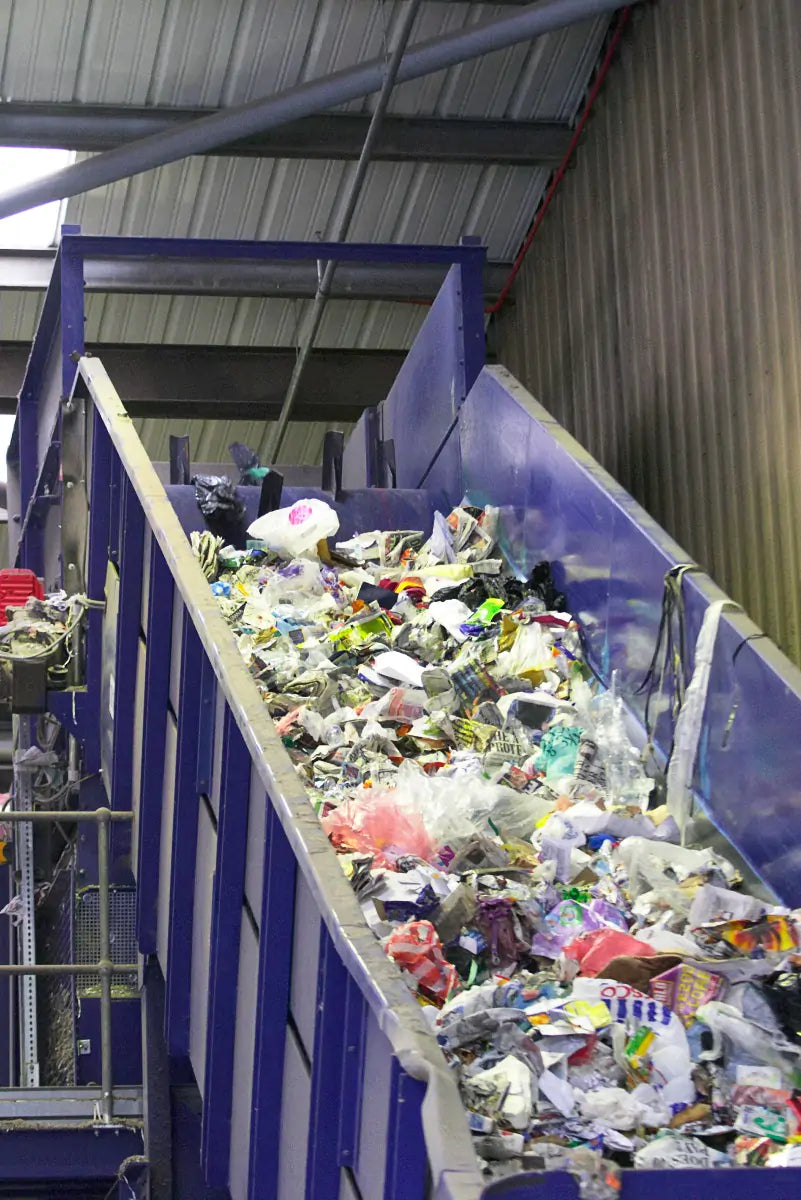Your basket is currently empty.
Shop NowHow is Recycling Sorted?

How is Recycling Sorted?
What happens to your recycling once you have methodically washed and sorted it at home? Well, it needs to be sorted further, and contamination is removed, before materials can be made into either new materials or new products.
We are recycling more than ever, but for recycling to be effective, it needs to be sorted appropriately to maximise the amount of materials that can be recovered.
New technologies are being implemented constantly to improve the efficiency and effectiveness of the waste sorting process.
The recycling process
Once your rubbish has been collected, it will usually be taken to a Materials Recovery Facility, or MRF. The waste bags are opened and the waste is put onto a conveyor belt and moved into a processing area. First, the waste will go into a pre-sort area, where any items that can’t be recycled are removed, and then the materials move into an area where they can be sorted automatically by machines, or manually by workers.
What happens to different materials?
- Glass, plastic, metal, card, and papers are separated using trommels, which are screened cylinders or drums. A 45mm trammel removes glass, and a 170mm trammel removes newspaper, paper, card, plastic, and metal.
- Plastic, metal, card, and paper are further sorted by ballistic separators. Plastics are then separated by an optical scanner which can identify different plastics by colour.
- Huge magnets sort steel and tins, and an eddy current separator creates a strong magnetic field to disperse aluminium into a separate collection area.
- Paper and card are sorted into different grades.
- All materials are given a final check before they are dispatched.
- High quality recyclables are sold to be made into new products.
- Separated materials are rolled into bales and loaded onto lorries to be transported and reprocessed.

Where are the materials taken?
- Paper is taken to papermills where it is made into newspapers, magazines, tissues, toilet paper and cards.
- Card is turned into cardboard packaging.
- Food tins are sent to steelworks, where they are recycled into anything from paperclips to coat hangers or even vehicle parts.
- Aluminium cans are made into new drinks cans
- Plastic bottles can be recycled into many different products, including garden furniture, road signs and fleece jackets.
- General household waste is taken to an energy recovery facility, or ERF, where it is incinerated and the heat energy that is recovered is used to produce steam which can be used to generate electricity for the national grid.
EU waste management directive
In June 2008, the EU voted to give each member country authority over its own waste management targets. The directive states that by 2020, 50% of all household waste and 70% of construction waste should either be recycled or reused. This is the reason why recycling and sorting processes need to be as efficient and effective as possible.
Separation technologies
Most waste facilities use one or more of these methods to sort materials for recycling:
• Trommel separators/drum screens
This technology can separate materials according to their particle size. Waste is fed into a large drum which rotates. The drum is perforated with holes, and any material that is smaller than the holes will drop through, while the larger particles will stay inside the drum.
• Eddy current separator
This method is used for the separation of metals. An ‘eddy current’ is created when a conductor is exposed to a variable magnetic field. The magnetic field separates certain types of metals from others.
• Induction sorting
Material is sent along a conveyor belt which has sensors underneath. The sensors locate certain types of material then separate them using fast air jets.
• Near infrared sensors (NIR)
When materials are illuminated they reflect light, and the infrared sensors can distinguish certain materials from others based on the way they reflect light.
• X-ray technology
X-rays can be used to distinguish between different types of materials based on their density.
Images courtesy of WRAP UK
